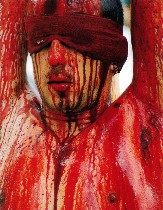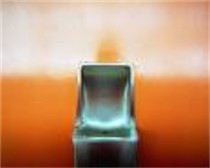 If you want to read a sly critique of how the art market works, you can check out a book we already mentioned to you here, Earl Bronsteen’s “How to Become a Famous Contemporary Artist.”
If you want to read a sly critique of how the art market works, you can check out a book we already mentioned to you here, Earl Bronsteen’s “How to Become a Famous Contemporary Artist.”
Bronsteen sent along his tongue-in-cheek how-to-do-it book after we put up a post about it based on some promotional material. I find the book even more interesting than I had expected, not because he gives good, funny advice, but because Bronsteen uses the “advice” as a subterfuge for effectively skewering art world excesses that defy common sense and common values.
Amongst my favorite bits of commentary, posing as advice, are:
 “Rule #82: Expose yourself in the name of art,” in which he references the masochistic and nudist path to satori taken by Marina Abramovic; and
“Rule #82: Expose yourself in the name of art,” in which he references the masochistic and nudist path to satori taken by Marina Abramovic; and
“Rule #83: Become a butcher on your way to an M.F.A.” in which he references blood orgiast Hermann Nitsch (image from one of Nitsch’s events; for artblog’s Nitsch commentary, check the Hermann Nitsch thread list in the left-hand column).
“Rule #42: Strike while the iron is hot,” in which he references Jeff Koons, who made 3,000 cheesy multiples of a “Puppy” vase on a pedestal, thereby taking advantage of the good press he got for his giant “Puppy” installations. Take that, Cerealart (top image, Jeff Koons’ puppy vase tschotschka).
 “Rule #17: Urinals are the Rosetta Stone of contemporary art” (image, Lisa Kereszi’s “School Orange Water Fountain” photo, bringing to mind Duchamp’s urinal “Fountain,” which begat a slew of urinal art).
“Rule #17: Urinals are the Rosetta Stone of contemporary art” (image, Lisa Kereszi’s “School Orange Water Fountain” photo, bringing to mind Duchamp’s urinal “Fountain,” which begat a slew of urinal art).The book is not as consistently witty and global through all 136 rules–some are fairly petty and specific, like “Rule #34: Pour salt into a rug,” but there’s plenty here for a laugh and a little perspective. As I mentioned in my previous post, Bronsteen, 79, followed some of his own advice and it’s done well by him from a marketing point of view.
I must say my favorite parts of the book were the back-cover promotion blurbs from the living and the dead–from Christo to Leonardo–and the legal disclaimers at the front of the book followed by one-liner book titles that Bronsteen lists as his so-called credentials.
What Bronsteen has in spades is marketing charisma which has taken him pretty far in a competitive art world that doesn’t know s_ _ _ from shinola sometimes (see Rule #27: Turn s_ _ _ into shinola,” in which Bronsteen turns his 500+ rejections into a wall of art. He writes, “I also made it into The Guinness Book of Records as the Most Rejected Artist in the world.” I would guess, however, that some artists might have even more rejections; they just haven’t taken their rejections to Guinness).









